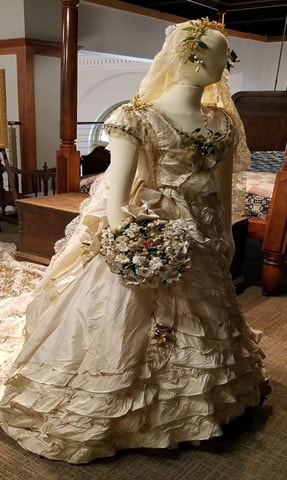|
Good morning everyone! I love cased images. They offer so much detail that every time you look at them you see something new.
The above image is a 1/6 plate ambrotype probably dating between 1856 and 1858. How do I know? The bonnets. Bonnets between 1856 and 1858 were extremely small, sat very low and back on the head. From the front, they look like little halos. In this image, the ties are wide and long. Even when tied, the ends reach to the elbows of the wearers. Some bonnets in the 1850s show shorter ties, but as we move towards the 1860s ties are long. The most important detail to note about the bonnet trimming is the very full cap of netting. If there is any detail reproductions miss, the amount of netting on late 1850s and early 1860s bonnets. If you are trimming a bonnet and wonder if you need more netting, the answer is yes. I am off for now, but stay tuned for your next installment of Wet Plate Wednesday!
0 Comments
Leave a Reply. |
AuthorUsually Dannielle, sometimes Mandy Archives
January 2021
Categories |

 RSS Feed
RSS Feed